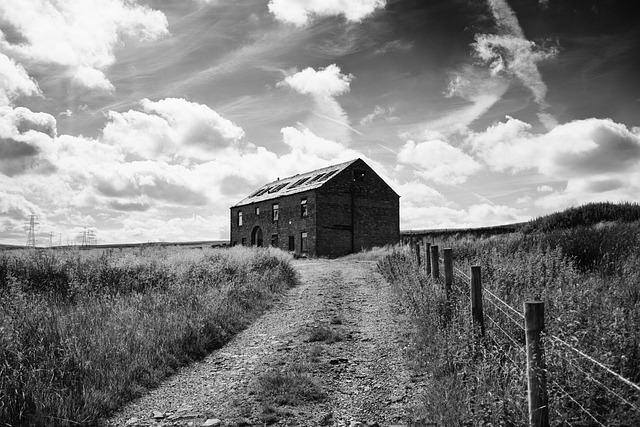Understanding your home's vulnerabilities to extreme weather is key to enhancing its resilience. Assess factors like age, materials, roof integrity, and landscape for risks like hurricanes, storm surges, or wildfires. Prioritize robust wind protection with impact-resistant windows and doors, reinforcing the roof with rated shingles or metal panels. Create a system including high-quality materials, waterproof membranes, and smart technology for automated, weather-responsive defenses. These upgrades ensure comfort, minimize damage, and contribute to long-term cost savings, making your home more resilient against various weather conditions.
“Protecting your home from harsh weather conditions is not just about aesthetics; it’s a crucial investment in your family’s safety and peace of mind. In an era marked by increasingly extreme climate events, understanding your home’s vulnerabilities is the first step towards resilient upgrades. From robust wind protection to airtight windows and smart technology solutions, this article explores essential strategies for enhancing your home’s weather defense. Discover practical tips on roofing improvements, waterproof barriers, and automated systems that adapt to changing weather patterns.”
- Understanding Your Home's Vulnerability to Extreme Weather
- Essential Upgrades for Robust Wind Protection
- Creating a Waterproof Barrier: Roofing and Exterior Improvements
- Enhancing Windows and Doors: The Gatekeepers Against Elements
- Smart Technology: Automating Weather-Responsive Defenses
Understanding Your Home's Vulnerability to Extreme Weather

Understanding your home’s vulnerability to extreme weather is the first step in enhancing its resilience and ensuring optimal home weather protection. Different geographic locations face distinct climatic challenges, from intense storms and high winds to heavy rainfall and extreme temperatures. Assessing these vulnerabilities involves considering factors like your home’s age, construction materials, roof integrity, and surrounding landscape. Older homes, for instance, might require more substantial upgrades to their roofs and walls to withstand harsh weather conditions compared to newer structures with modern building standards.
Additionally, the region’s historical weather patterns and recent climate trends provide valuable insights into potential risks. Coastal areas are particularly susceptible to hurricanes and storm surges, necessitating robust flood protection measures. Conversely, regions prone to wildfires require specific upgrades like fire-resistant roofing materials and clear fuel management around the property. By understanding these vulnerabilities, homeowners can make informed decisions about which resilient home upgrades offer the most significant home weather protection.
Essential Upgrades for Robust Wind Protection

In terms of home weather protection, robust wind protection is a crucial upgrade for any residence situated in areas prone to strong winds or extreme weather conditions. Essential upgrades include installing impact-resistant windows and doors, which are designed to withstand high-velocity impacts and maintain structural integrity during storms. These products often feature reinforced frames, advanced sealing mechanisms, and hurricane shutters for added protection.
Furthermore, reinforcing the roof is a strategic move for enhancing home weather protection. Upgrading to a stronger roofing system, such as impact-rated shingles or metal panels, can significantly reduce the risk of damage from flying debris during severe weather events. Properly installed and sealed gutters and downspouts are also vital components, as they efficiently direct rainwater away from the foundation, preventing water intrusion and potential structural harm.
Creating a Waterproof Barrier: Roofing and Exterior Improvements

Creating a waterproof barrier is a crucial step in enhancing your home’s weather protection, especially against relentless rain and harsh storms. Start by evaluating your roofing system—a strong defense against the elements. Consider investing in high-quality, impact-resistant roofing materials that offer superior durability. From asphalt shingles with enhanced water repellency to metal roofs, these options provide excellent protection against leaks and damage. Ensure proper installation with tight seals around fixtures and vents to create an impenetrable barrier against moisture intrusion.
Furthermore, exterior improvements play a vital role in home weather protection. Waterproof membranes and coatings applied to walls, foundations, and other vulnerable areas can significantly reduce the risk of water penetration and related issues like mold growth. These protective layers act as a second line of defense, especially during heavy rainfall or snowmelt, ensuring your home remains dry and comfortable. By integrating these measures into your upgrade plans, you’ll create a resilient home that withstands the test of time and various weather conditions.
Enhancing Windows and Doors: The Gatekeepers Against Elements

Enhancing your home’s windows and doors is a strategic move for effective home weather protection. These elements are often the first lines of defense against harsh weather conditions, from gusty winds to relentless rain or even snow. Upgrading them with robust, high-quality materials can significantly improve energy efficiency, reduce noise pollution, and offer better insulation.
Weatherproof windows and doors are designed to seal tightly, preventing water seepage and air leaks. They often come equipped with advanced features like storm shutters, dual-paned glass for better insulation, and specialized seals that create a tight barrier against the elements. Such upgrades not only protect your home from extreme weather but also contribute to long-term savings by maintaining a comfortable indoor temperature year-round.
Smart Technology: Automating Weather-Responsive Defenses

Smart Technology is revolutionizing home weather protection by enabling automated, weather-responsive defenses. Systems equipped with sensors can detect changes in temperature, humidity, and wind speed, initiating pre-programmed actions to safeguard your home. For instance, during a storm, these devices might close windows and doors automatically, preventing damage from flying debris. They can also trigger lighting and heating adjustments to minimize energy waste when not needed.
This technological advancement offers homeowners peace of mind, knowing their homes are protected even when they’re away. Moreover, smart technology integrates seamlessly with other home automation systems, creating a comprehensive network that enhances overall comfort and efficiency. By leveraging AI and machine learning, these systems can predict weather patterns, further optimizing energy usage and ensuring your home is always prepared for any weather event.
When it comes to safeguarding your home from the elements, implementing resilient upgrades is a proactive step towards ensuring comfort and safety during extreme weather events. By understanding your home’s vulnerabilities, enhancing structural defenses, and embracing smart technology, you can create a fortress that stands strong against wind, water, and other natural challenges. Invest in these crucial upgrades for peace of mind and to protect one of your most valuable investments – your home. With these measures in place, you’ll be better equipped to navigate the storms ahead, literally and metaphorically.
